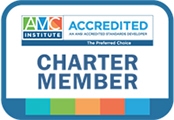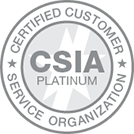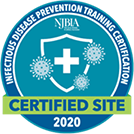Are we doing the right things?” and “Are we doing enough?” are two of the top questions that keep association professionals up at night. We can stop worrying (and start sleeping) because there are ways to get answers to those questions through member research.
Does member research seem too expensive, time consuming, or maybe even too difficult or mysterious? It doesn’t have to be. In fact once we get started many of us find member data sleuthing fun and maybe a little addictive. Do you have some questions about your members? Great! Here are some paths to consider that will help you get accurate, complete, and actionable answers to your questions.
Surveys

As a rule, when we have a question about our members that we can’t answer with our data, we tend to turn to member surveys first. Member surveys can be cheap, fast, and offer conclusive results, which make them the method of choice. But be careful, surveys are designed to answer only certain types of questions. When you want to know how members rank existing benefits, where they spend their time on social media, or which of your competitors they also purchase membership from, surveys are the way to go.
Surveys become much more interesting when you continually field them over time; much like the annual benchmarking survey process. You may be able to see trends in members’ opinions by surveying year after year. The data points to something interesting going on when we see ongoing trends or year-to-year variances.
Focus Groups

While surveys (and data) are good for measuring what you already do, focus groups, and phone interviews can give you insights for planning what you need to do in the future. Expert focus group moderators can get respondents to share stories and collaborate with each other to uncover depth and detail around their professional problems, challenges, and goals. Understanding members’ problems is the foundation for future strategy, innovation and marketing.
The one big problem inherent with the focus group methodology is the bias for inaccuracy. Participants may hold back on their real feelings or experiences for fear of looking vulnerable in front of their peers. Additionally, in this format, a single strong-willed participant can sway the tone and output of the whole group. Big brand companies effectively use focus groups, but, because of the potential for bias, will host more than a dozen. If there’s an outlier they’ll toss out those findings. Associations, many with finite budgets can’t do this. As a rule, I don’t recommend focus groups for associations but you can get the same information with a different method.
Member Phone Interviews
Without the bias, member phone interviews can get you the same rich, contextual response without the risk of inaccuracy. Member phone interviews can also answer those big questions for us: do we need to update our association’s strategy for the future? How else can we meet our member’s needs? What can we do to provide a better member experience? What problems are our members struggling with? How do we explain the value of the association? What is the story our members need to hear?
When we have these types of questions qualitative phone interviews are the perfect method for uncovering the insights that can help us find answers. With any qualitative member research method it takes some time and effort to get the results, but it is also reassuring to make strategy, marketing, and innovation decisions based on member insights.
When you are wondering what members think about what you already offer, surveys and data can give you answers. When you wonder how you can help members move forward, member phone interviews can get you answers.
About our Guest Author
Are you curious about member insights-based association marketing, innovation or strategy? Find more articles like these from Amanda Kaiser, qualitative member researcher, at www.SmoothThePath.net or on Twitter at @SmoothThePath.




